Recent Posts
Safeguarding Your Property: Fire Restoration Insights and Prevention Tips
12/17/2024 (Permalink)
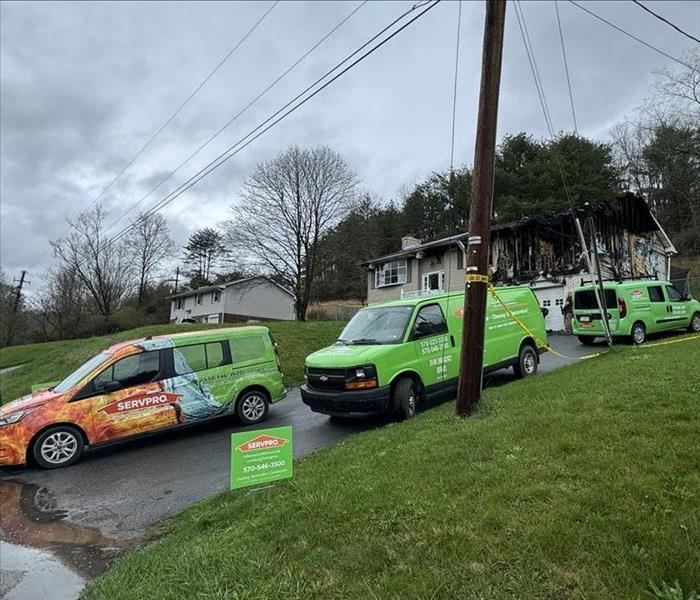 SERVPRO team residential fire restoration
SERVPRO team residential fire restoration
Safeguarding Your Property: Fire Restoration Insights and Prevention Tips
This year, our team at SERVPRO® of Williamsport Montoursville and Lewisburg Selinsgrove has worked tirelessly to help dozens of homeowners and business owners recover from the devastating effects of fire. It’s our mission to restore properties and peace of mind after such traumatic events. But as much as we are here to help rebuild, we are even more passionate about helping you prevent fires from happening in the first place.
Lessons Learned from Fire Restoration
Every fire we’ve restored this year has taught us something new about safety, preparedness, and resilience. One thing remains constant: fires are unpredictable and can happen to anyone. The emotional and financial toll of fire damage is immense, but the good news is that many fires are preventable. Taking proactive steps now can make all the difference in keeping your loved ones and property safe.
Are Your Smoke Detectors Ready to Save Lives?
Smoke detectors are your first line of defense against fires. According to safety experts, you should have at least one smoke detector in every bedroom and on every level of your home. However, having the devices isn’t enough; they need to be maintained. Here’s how to ensure your smoke detectors are working properly:
- Test them monthly. Press the test button to ensure the alarm is functioning.
- Replace the batteries twice a year. A good reminder is to do this when you adjust your clocks for daylight saving time.
- Upgrade if necessary. If your smoke detectors are more than 10 years old, replace them to ensure reliability.
Develop and Practice a Family Fire Escape Plan
A fire escape plan can save lives, but only if everyone in your household knows and practices it. Here’s how to create a plan:
- Map out your exits. Identify at least two ways out of every room in your home, typically a door and a window.
- Check your windows. Ensure that all windows can be opened easily and aren’t painted shut or obstructed.
- Designate a meeting spot. Choose a safe location outside your home where everyone can gather.
- Practice regularly. Conduct fire drills with your family at least twice a year. Make sure everyone knows how to open windows and use escape ladders if needed.
- Teach fire safety. Discuss with family members how to stay low to the ground to avoid smoke and how to test doors for heat before opening them.
Protect Your Property and Loved Ones
While we hope you never have to face the aftermath of a fire, we are always here to help if you do. From smoke damage restoration to complete structural rebuilding, [Your Restoration Company Name] is your trusted partner in recovery.
Let’s work together to prevent fires and keep our community safe. Take time this week to check your smoke detectors, review your family escape plan, and ensure your home is as fire-ready as possible. A few minutes of preparation today can save lives and prevent heartache tomorrow.
If you’d like more fire prevention tips or have questions about our fire restoration services, contact us anytime. Together, we can safeguard your home, business, and loved ones.
Recovering After a Home Fire: Crucial Mitigation Steps and the Value of SERVPRO Restoration
11/19/2024 (Permalink)
Experiencing a home fire is a traumatic event, often leaving homeowners feeling overwhelmed by the physical and emotional aftermath. Knowing the key steps to take immediately after the fire can significantly impact the speed and success of recovery. One of the most critical decisions during this process is choosing a professional restoration company like SERVPRO®, especially one experienced in navigating insurance claims. Here's why.
Immediate Steps After a Fire
Ensure Safety First
Once the fire is extinguished, ensure everyone is safe and accounted for. Avoid entering the property until the fire department deems it safe to do so. Structural damage or lingering hazards, such as smoke and ash, can pose significant risks.
Contact Your Insurance Company
Notify your insurance provider as soon as possible. Initiating a claim early helps streamline the process of assessing damages and arranging for coverage.
Document the Damage
If it's safe to enter your home, take photographs and videos of the affected areas to document the damage. This documentation is essential for insurance claims and helps ensure proper compensation for losses.
Prevent Further Damage
Fires can leave properties vulnerable to secondary damages such as water intrusion (from firefighting efforts) and mold growth. Tarping roofs, sealing windows, and removing standing water are essential measures to prevent further harm to your home.
The Role of Professional Restoration Companies
While it may be tempting to tackle some tasks on your own, working with a professional restoration company offers several key benefits:
Specialized Expertise
Fire damage isn’t just about burnt walls and furniture—it includes hidden issues like smoke odors, soot residue, and water damage. Restoration professionals use advanced equipment and techniques to address these problems comprehensively, ensuring a safe and thorough cleanup.
Efficient Recovery
Time is critical when dealing with fire damage. Restoration companies can rapidly assess the situation and deploy resources to mitigate the effects of the fire, reducing the risk of further structural or environmental damage.
Insurance Coordination
Dealing with insurance claims can be daunting. Professional restoration companies experienced in insurance coordination act as advocates for homeowners, ensuring all necessary documentation is submitted and claims are processed efficiently. Their familiarity with insurance policies can also help identify additional coverage opportunities, potentially reducing out-of-pocket expenses.
Stress Reduction
The aftermath of a fire can be emotionally draining. Having a trusted team manage the restoration process allows homeowners to focus on personal recovery and rebuilding their lives.
Why Expertise Matters
Choosing a restoration company with proven expertise ensures your home is restored to its pre-fire condition with minimal complications. These professionals know how to handle both the technical aspects of restoration and the bureaucratic challenges of insurance claims, providing peace of mind during a stressful time.
In conclusion, after a home fire, every decision matters. Prompt action, coupled with the support of an experienced restoration company, can make the recovery process smoother, faster, and less stressful. Prioritize safety, act swiftly, and trust the professionals to help rebuild your home and your sense of security.
Why do home owners and business owners choose SERVPRO®?
11/5/2024 (Permalink)
 SERVPRO TEAM of Williamsport/Montoursville, and Lewisburg/Selinsgrove
SERVPRO TEAM of Williamsport/Montoursville, and Lewisburg/Selinsgrove
When disaster strikes—whether it's a flood, fire, storm damage, or mold infestation—choosing the right restoration company is essential to getting life back to normal quickly and efficiently.
SERVPRO® is a trusted name in restoration services for both businesses and homeowners across the country, and there are several compelling reasons to consider them for any restoration needs.
One of SERVPRO's standout qualities is its rapid response time. Disasters don’t wait, and neither does SERVPRO; they operate 24/7, with teams ready to respond quickly to minimize damage. Speed is critical in situations like water or fire damage, as delays can lead to further deterioration, mold growth, or structural weakening. SERVPRO’s fast response helps reduce these risks and makes recovery smoother and more manageable.
Another advantage of choosing SERVPRO is their expertise and training. SERVPRO technicians are highly trained and certified in a wide range of restoration and cleaning techniques, ensuring that the job is done right. They bring advanced equipment and techniques that restore homes and businesses to pre-disaster conditions. Additionally, SERVPRO follows strict protocols and safety measures to keep everyone safe and informed throughout the restoration process.
SERVPRO also understands the financial and emotional strain of restoration. They work closely with insurance companies to streamline claims, reducing the burden on the property owner. This cooperative approach not only eases communication but also helps clients receive timely support. With decades of experience, specialized tools, and a customer-centered approach, SERVPRO is an excellent choice for anyone seeking reliable, expert restoration services.
Why do home owners or business owners choose ®SERVPRO?
10/29/2024 (Permalink)
 2024 SERVPRO Williamsport/Montoursville, Lewisburg/Selingrove Team Picture
2024 SERVPRO Williamsport/Montoursville, Lewisburg/Selingrove Team Picture
When disaster strikes—whether it's a flood, fire, storm damage, or mold infestation—choosing the right restoration company is essential to getting life back to normal quickly and efficiently.
SERVPRO® is a trusted name in restoration services for both businesses and homeowners across the country, and there are several compelling reasons to consider them for any restoration needs.
One of SERVPRO's standout qualities is its rapid response time. Disasters don’t wait, and neither does SERVPRO; they operate 24/7, with teams ready to respond quickly to minimize damage. Speed is critical in situations like water or fire damage, as delays can lead to further deterioration, mold growth, or structural weakening. SERVPRO’s fast response helps reduce these risks and makes recovery smoother and more manageable.
Another advantage of choosing SERVPRO is their expertise and training. SERVPRO technicians are highly trained and certified in a wide range of restoration and cleaning techniques, ensuring that the job is done right. They bring advanced equipment and techniques that restore homes and businesses to pre-disaster conditions. Additionally, SERVPRO follows strict protocols and safety measures to keep everyone safe and informed throughout the restoration process.
SERVPRO also understands the financial and emotional strain of restoration. They work closely with insurance companies to streamline claims, reducing the burden on the property owner. This cooperative approach not only eases communication but also helps clients receive timely support. With decades of experience, specialized tools, and a customer-centered approach, SERVPRO is an excellent choice for anyone seeking reliable, expert restoration services.
Navigating the Storm: The Vital Role of Snow Removal Services
1/16/2024 (Permalink)
The Northeastern United States is no stranger to winter storms, where heavy snowfall blankets the landscape, transforming it into a picturesque winter wonderland. However, this beauty often comes with a challenging aftermath, necessitating swift and efficient snow removal services to restore normalcy. In this blog, we explore the crucial role these services play in the cleanup process following winter storms in the Northeast.
Mitigating Safety Risks
Excessive snow accumulation poses significant safety risks, from slippery sidewalks to blocked roadways. Snow removal services play a critical role in mitigating these risks by clearing pathways, driveways, and streets, ensuring safe and accessible routes for both pedestrians and vehicles.
Preventing Property Damage
The weight of accumulated snow can strain structures, causing damage to roofs, awnings, and other vulnerable areas. Professional snow removal services are equipped to prevent potential property damage by efficiently clearing snow from roofs and other critical structures, preserving their integrity.
Maintaining Business Continuity
For businesses in the Northeast, timely snow removal is essential for maintaining continuity during the winter season. Snow removal services help ensure that commercial properties, parking lots, and access points remain clear, allowing businesses to operate smoothly without disruptions.
Enhancing Emergency Response
In the event of a medical emergency or fire, quick and unimpeded access is paramount. Snow removal services play a crucial role in facilitating emergency response efforts by keeping roads and pathways clear, enabling first responders to reach their destinations swiftly.
Protecting Landscaping and Infrastructure
Snow and ice accumulation can be detrimental to landscaping features, walkways, and other outdoor infrastructure. Professional snow removal services use specialized equipment and techniques to clear snow without causing damage to these essential elements, preserving the aesthetic and functionality of outdoor spaces.
Complying with Local Regulations
Many municipalities in the Northeast have regulations in place requiring property owners to clear snow from sidewalks and driveways promptly. Snow removal services assist property owners in meeting these obligations, avoiding potential fines and contributing to the overall safety and accessibility of the community.
Minimizing Liability Risks
Accumulated snow and ice increase the risk of slips and falls, leading to potential liability issues for property owners. Snow removal services help minimize these risks by promptly and thoroughly clearing walkways and public spaces, reducing the likelihood of accidents and associated liabilities.
Improving Transportation Efficiency
Northeastern cities and towns heavily rely on efficient transportation systems. Snow removal services are instrumental in ensuring that roads, highways, and public transportation routes are kept clear, promoting smooth traffic flow and minimizing disruptions to daily commutes.
Alleviating Environmental Impact:
Beyond safety and infrastructure concerns, snow removal services also play a role in environmental stewardship. Professional services employ eco-friendly practices and materials, minimizing the environmental impact of snow removal efforts while effectively managing snow accumulation.
Enhancing Quality of Life
Ultimately, the role of snow removal services in Northeast storm cleanup extends beyond practical considerations. By swiftly and efficiently clearing snow, these services contribute to the overall quality of life for residents, allowing them to navigate their communities with ease and enjoy the winter season without undue challenges.
In conclusion, the services provided by professional snow removal companies are essential for managing the aftermath of winter storms in the Northeast. Their expertise not only ensures safety and accessibility but also contributes to the resilience and efficiency of communities grappling with the challenges of winter weather.
After the Flames: Navigating the Differences in Fire Damage Restoration for Homes and Commercial Properties
11/16/2023 (Permalink)
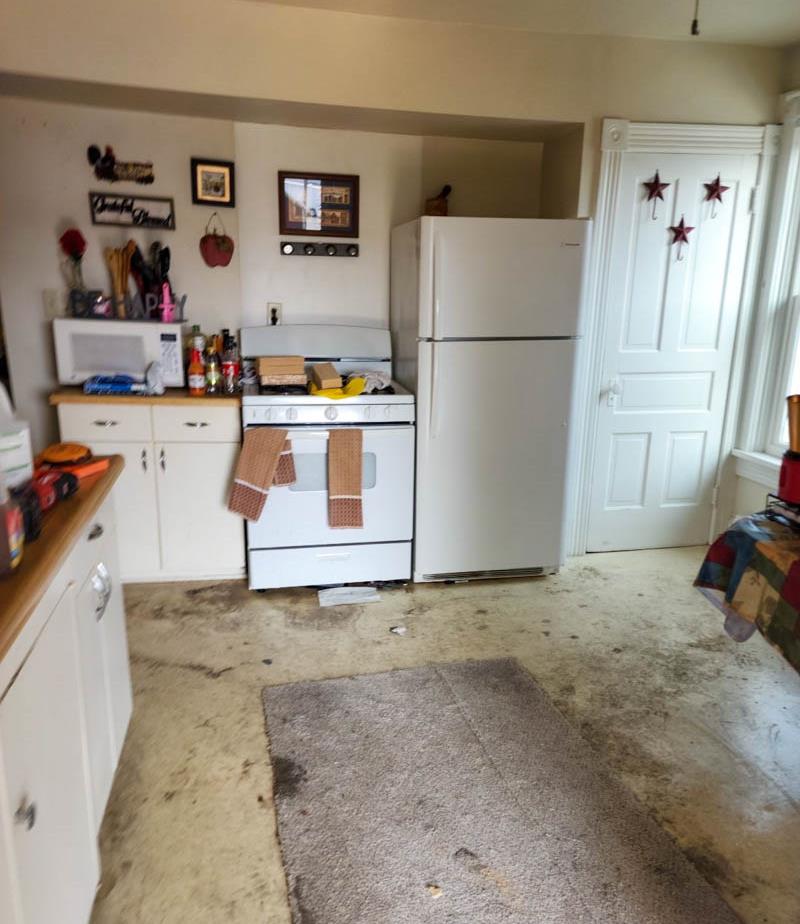 Call the professionals at SERVPRO for your fire damage restoration services.
Call the professionals at SERVPRO for your fire damage restoration services.
Fire damage restoration services are essential after a fire outbreak in a home or a commercial property. These services involve cleaning up and repairing damage caused by the fire and restoring the affected property to its pre-fire condition. However, the restoration process may differ significantly when dealing with fire damage in homes versus commercial properties. In this blog, we will explore the main differences in fire damage restoration for homes versus commercial properties and highlight what property owners need to know.
Type of Property Damage
When it comes to property damage, commercial properties often suffer more extensive damage than homes. This is due to the larger size and complex structural features of commercial properties. Commercial properties may have extensive HVAC and electrical systems, which increases the risk of fire damage to these systems.
Time and Resources Required
Restoration services for commercial properties require more resources and time than those for homes. Commercial properties have more significant amounts of content and inventory, making it more challenging to evaluate and restore the premises. Commercial properties require a more complex restoration strategy and typically require multiple specialists working on the task.
Inspection Process
The inspection process differs for homes and commercial properties. Home inspections are usually more straightforward, requiring fewer steps than inspections for commercial properties. Commercial properties require a more comprehensive inspection process to identify the extent of damages and develop an appropriate restoration plan.
Insurance Coverage
The insurance coverage for fire damage in homes versus commercial properties is quite different. Commercial properties have a more complex insurance coverage structure as they typically involve more significant financial risks. Commercial property insurance policies are more comprehensive and may have unique requirements and limitations that homeowners' policies may not have.
Work Safety Concerns
Commercial property restoration work poses more significant safety concerns than home restoration work. Commercial properties have a higher chance of structural damage, making the restoration work more dangerous, especially when working at heights.
In conclusion, the differences in fire damage restoration for homes and commercial properties are significant. The scope, time, and resources required to restore a commercial property exceeds that of a home. Engaging licensed and experienced restoration services is essential for both types of properties, ensuring that the damages are thoroughly addressed, and the property is restored to its pre-fire condition. Property owners should work with their service providers to establish a suitable restoration plan that accounts for the unique needs of their property type.
Mastering Mold Crawlspaces: A Comprehensive Guide to Understanding and Addressing Mold Growth
10/29/2023 (Permalink)
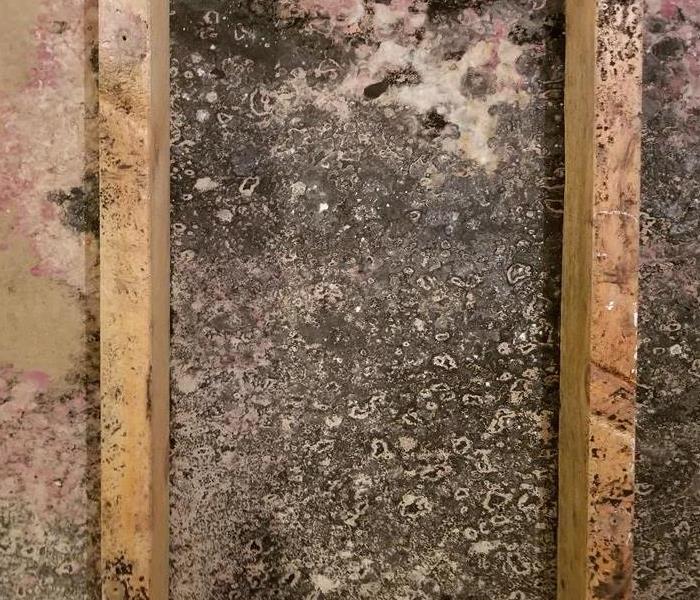 Preventing mold in crawl spaces is crucial to maintain a healthy environment for your home.
Preventing mold in crawl spaces is crucial to maintain a healthy environment for your home.
Crawl spaces are susceptible to mold growth due to their enclosed, damp environment. Understanding how to prevent and address mold in crawl spaces is essential for homeowners. In this blog, we will explore effective strategies for mold prevention and remediation specifically tailored to crawl spaces, without discussing associated health risks or concerns.
Moisture Control in Crawl Spaces
Moisture control is vital in preventing mold growth in crawl spaces. Start by addressing any sources of excess moisture, such as leaks or poor drainage. Install effective vapor barriers or crawl space encapsulation systems to protect against ground moisture entering the space. Improve ventilation by adding vents or fans to ensure proper airflow and reduce humidity. Regularly inspect and maintain gutters, downspouts, and grading to divert water away from the foundation. By implementing these moisture control measures, you can create an environment less conducive to mold growth.
Crawl Space Insulation
Proper insulation in crawl spaces can mitigate the risk of mold growth. Make sure to choose insulation materials that are resistant to moisture and mold. Insulate the walls and floors of the crawl space to prevent condensation and temperature fluctuations. Seal any gaps or cracks to minimize the entry of moisture and outside air. Insulation not only helps regulate temperature but also reduces moisture buildup, creating an inhospitable environment for mold growth.
Regular Inspection and Maintenance
Regular inspection of crawl spaces is crucial for early detection and prevention of mold growth. Look for signs of water intrusion, such as damp spots, stains, or standing water. Check for condensation on pipes or insulation. Monitor for musty odors or indicators of excessive humidity. Keep the crawl space clean by removing debris and organic materials that can serve as food sources for mold. Regularly inspect and clean gutters and downspouts to prevent water from entering the crawl space. By conducting routine maintenance and addressing issues promptly, homeowners can reduce the likelihood of mold growth.
Professional Remediation
If mold is discovered in a crawl space, professional remediation is recommended. Trained experts can assess the extent of the mold problem and undertake the necessary steps for safe removal and remediation. They have the knowledge, equipment, and experience to decontaminate the area, remove affected materials, and restore the crawl space to a mold-free condition. Professional remediation ensures that proper containment measures are implemented to prevent mold spores from spreading to other areas of the home.
Maintaining a Healthy Crawl Space
In addition to mold prevention and remediation, homeowners can take further steps to maintain a healthy crawl space. Regularly monitor the humidity levels in the crawl space using hygrometers to ensure they stay within the recommended range of 30-50%. Consider installing a dehumidifier if necessary to control excessive moisture. Regularly inspect and clean vents to promote proper airflow and prevent blockages. Maintain proper drainage around the foundation to prevent water accumulation. Lastly, consider scheduling periodic professional inspections of the crawl space to identify any potential issues early on. By implementing these measures, homeowners can enjoy a mold-free and healthy crawl space environment.
Preventing and remediating mold in crawl spaces is crucial for maintaining a healthy home environment. By implementing effective moisture control, insulation, and regular inspection, homeowners can decrease the likelihood of mold growth in these enclosed spaces. In case of mold infestation, enlisting the help of professional remediation experts is recommended to ensure safe and thorough removal.
How Properly Recording Water Damage Can Make or Break Your Insurance Claim
10/21/2023 (Permalink)
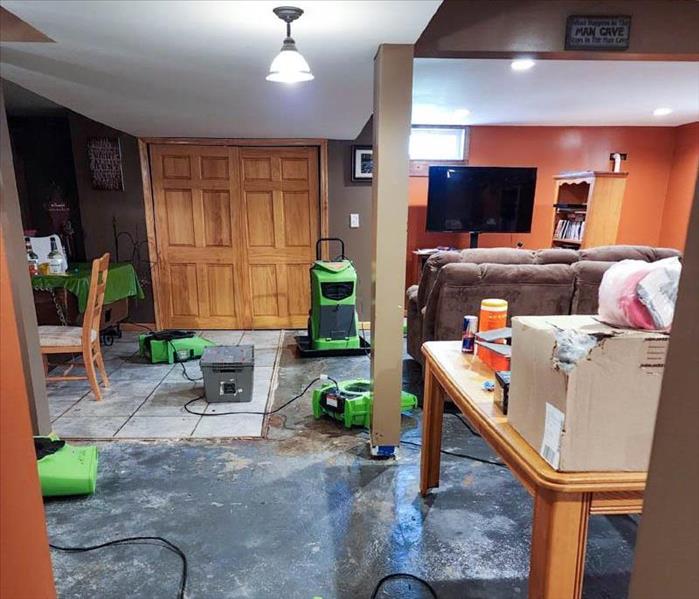 When faced with water damage in your home or property, documenting the extent of the damage is a critical step in the recovery process.
When faced with water damage in your home or property, documenting the extent of the damage is a critical step in the recovery process.
When faced with water damage in your home or property, documenting the extent of the damage becomes a critical step in the recovery process. Not only does thorough documentation help in assessing the necessary repairs and restoration, but it is also crucial for filing an insurance claim. In this blog post, we will explore the importance of documenting water damage and provide essential tips for maximizing your chances of a successful insurance claim.
Why Documentation Matters
Evidence for insurance claims: Proper documentation serves as evidence when filing an insurance claim for water damage. It helps establish the date, cause, and extent of the damage, supporting your claim for coverage and reimbursement.
Accurate assessment of damages: Detailed documentation allows for an accurate assessment of the damages. This ensures that all necessary repairs and restoration work are included in the insurance claim, avoiding potential disputes or underestimations that may leave you out of pocket for additional expenses.
Proof of pre-existing conditions: Documentation can also be vital in proving that certain damages existed before the water incident occurred. This prevents insurance companies from denying claims based on pre-existing conditions or wear and tear, which may not be covered.
Tips for Documenting Water Damage
Take photographs and videos: Capture comprehensive visual evidence of the damage using a camera or smartphone. Take photos and videos from multiple angles to provide a clear view of the affected areas. Remember to date your documentation to establish when the damage occurred.
Note relevant details: Record important details related to the water damage, such as the cause of the incident, areas affected, and any visible signs of damage or deterioration. Include descriptions of any valuable items or personal belongings that have been affected, as well.
Preserve documentation: Store all documentation, including photos, videos, receipts for repairs, and communications with contractors or restoration professionals in a safe place. This ensures that you have access to all the necessary information when filing an insurance claim.
Seek professional assessments: Engage professionals, such as water damage restoration experts, to assess the extent of the damage and provide detailed reports. These professional assessments often carry more weight in insurance claims and can help substantiate the severity of the damages.
Contact the insurance company promptly: Notify your insurance company as soon as possible after the water damage event. Follow their guidance regarding the claims process and provide all the necessary documentation and evidence promptly to avoid any delays or complications.
Remember, thorough documentation is the key to successfully navigating the insurance claims process after water damage. By capturing and preserving accurate and detailed evidence, you can ensure a smoother experience and maximize your chances of receiving the coverage you deserve to restore your property back to its pre-damage condition.
Preparing Your Business for Winter Storms: Lessons Learned
9/13/2023 (Permalink)
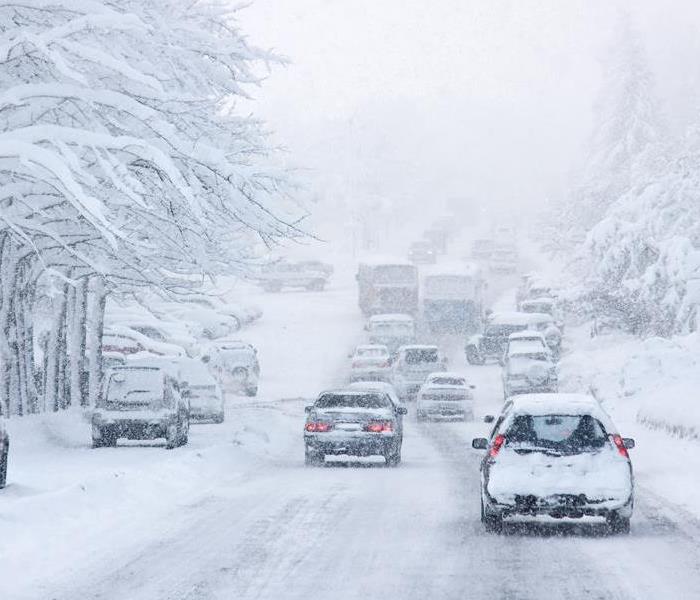 Preparing for winter storm is essential to keep your business open and operating.
Preparing for winter storm is essential to keep your business open and operating.
Winter storms in the Northeast can be both beautiful and treacherous. While they bring picturesque snowy landscapes, they can also wreak havoc on businesses if not adequately prepared. As a business owner, it is essential to learn from past experiences and be well-prepared for the challenges that winter storms can present. In this blog post, we will explore important lessons learned and provide valuable tips for preparing your business for Northeast winter storms.
Develop a Comprehensive Emergency Plan
Having a well-developed emergency plan is crucial for any business, especially in areas prone to winter storms. Your emergency plan should include procedures for employee safety, communication protocols, protocols for securing your premises, and contingency plans for business operations during and after a storm. It is essential to regularly review, update, and communicate your emergency plan to all employees to ensure everyone knows what to do in the event of a winter storm.
Maintain and Inspect Your Building
Regular maintenance and inspection of your building can help identify and address vulnerabilities before a winter storm hits. Ensure that your roof is in good condition, and any potential leaks or areas of weakness are addressed promptly. Inspect windows and doors for proper sealing and insulation to prevent drafts and moisture infiltration. Additionally, check your heating system to ensure it is functioning properly, and have it serviced regularly to avoid unexpected breakdowns during a storm.
Stock Up on Essential Supplies
Stocking up on essential supplies well in advance of a winter storm can help ensure your business can continue to operate smoothly. This includes items like road salt, shovels, de-icing products, emergency lighting, first aid kits, and extra food and water supplies. Don't forget to inform employees about the location of these supplies and educate them on their usage.
Communicate and Train Employees
Communication is key during a winter storm. Ensure that employees are well-informed about the company's emergency plan, their specific roles and responsibilities, and how to stay connected with the organization during and after a storm. Consider conducting emergency response and safety training sessions to equip your employees with the knowledge and skills needed to respond appropriately during a winter storm.
Develop a Remote Work Policy
Winter storms can disrupt transportation and make it challenging for employees to commute to work. Consider developing a remote work policy that allows employees to work from home during severe winter weather conditions. Ensure that employees have the necessary tools, such as laptops and access to remote collaboration software, to perform their work effectively from a remote setting.
Stay Informed and Monitor Weather Updates
As a business owner, it is crucial to stay informed about weather updates and monitor forecasts during the winter season. Sign up for weather alerts and notifications, and follow reputable weather sources for the latest information on storms. This will help you make informed decisions regarding business operations, employee safety, and customer communication.
Preparing your business for Northeast winter storms requires careful planning and proactive measures. By developing a comprehensive emergency plan, maintaining and inspecting your building, stocking up on essential supplies, communicating and training employees, developing a remote work policy, and staying informed about weather updates, you can minimize the impact of winter storms on your business. Remember, being prepared is not just about protecting your property, but also the safety and well-being of your employees and customers. By applying these lessons learned, you can ensure that your business is resilient, adaptable, and ready to tackle whatever winter storms the Northeast may bring.
Reduce Space Heater Fires: Keeping Your Home Safe and Warm in the Fall and Winter Months
8/15/2023 (Permalink)
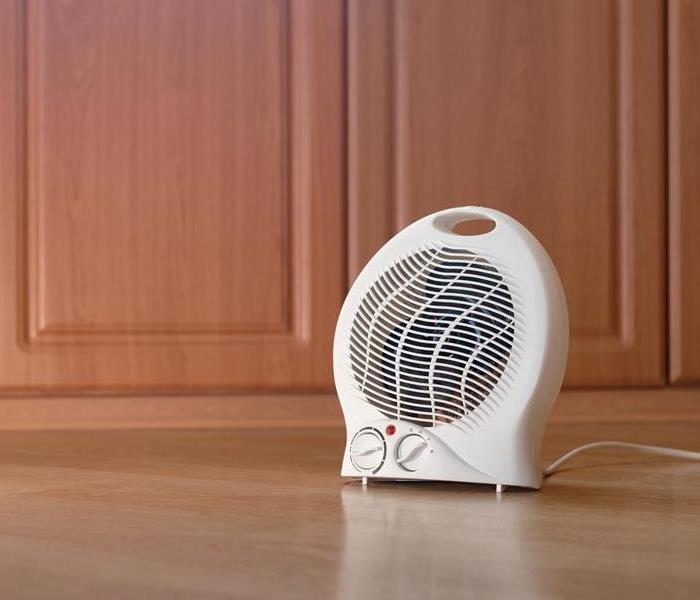 Prevent space heater fires by ensuring you take proper precautions and use responsibly.
Prevent space heater fires by ensuring you take proper precautions and use responsibly.
Space heaters provide a convenient way to warm up a room during the cold winter months. However, if not used properly, they can pose a serious fire hazard. To ensure the safety of your home and loved ones, it is essential to follow some important tips to reduce space heater fires. In this blog post, we will share seven valuable tips to help keep your home safe and warm.
Keep a Safe Distance
Always maintain a safe distance between your space heater and any flammable objects. Experts recommend keeping a minimum distance of three feet between the heater and items such as curtains, furniture, bedding, papers, and other combustible materials. Avoid placing the space heater near anything that can easily catch fire.
Place the space heater on a stable and level surface to minimize the risk of it tipping over. Avoid placing it on uneven surfaces, carpets, or rugs. A stable surface will ensure that the heater remains steady and decreases the chances of it accidentally falling and causing a fire.
Never leave a space heater unattended, especially when it is in use. If you need to leave the room or go to sleep, turn off the heater. It is important to always be present and aware of its operation to prevent any potential fire hazards.
Avoid fire
Avoid connecting space heaters to extension cords or power strips. It is best to plug the heater directly into a wall outlet to prevent overheating and potential electrical fires. If you find that you need an extension cord to reach the outlet, ensure that it is an appropriate cord rated for the wattage of your space heater.
Regularly inspect and maintain your space heater to ensure its proper functioning and safety. Clean the heater regularly by removing dust and debris that may accumulate over time. Additionally, check for any signs of damage such as frayed wires or loose connections. If you notice any issues, it is best to have the heater repaired or replaced.
Choose a space heater with a built-in thermostat and timer. These features allow you to regulate the temperature and duration of operation, minimizing the risk of overheating. By setting a temperature limit and a timer, you can ensure that the heater shuts off when it reaches a certain temperature or after a specific period of time.
Smoke Alarms and Fire Extinguishers
In addition to following these safety tips, it is important to have working smoke alarms installed throughout your home. Test them regularly to ensure they are functioning properly. Furthermore, keep a fire extinguisher nearby in case of an emergency. Make sure you know how to properly use the extinguisher and keep it readily accessible.
By following these seven tips, you can significantly reduce the risk of space heater fires in your home. Remember, safety should always be a top priority when using space heaters. With proper precautions and responsible usage, you can enjoy the warmth and comfort of a space heater while keeping your home and loved ones safe from the threat of fire. Stay warm, stay safe!





 24/7 Emergency Service
24/7 Emergency Service






